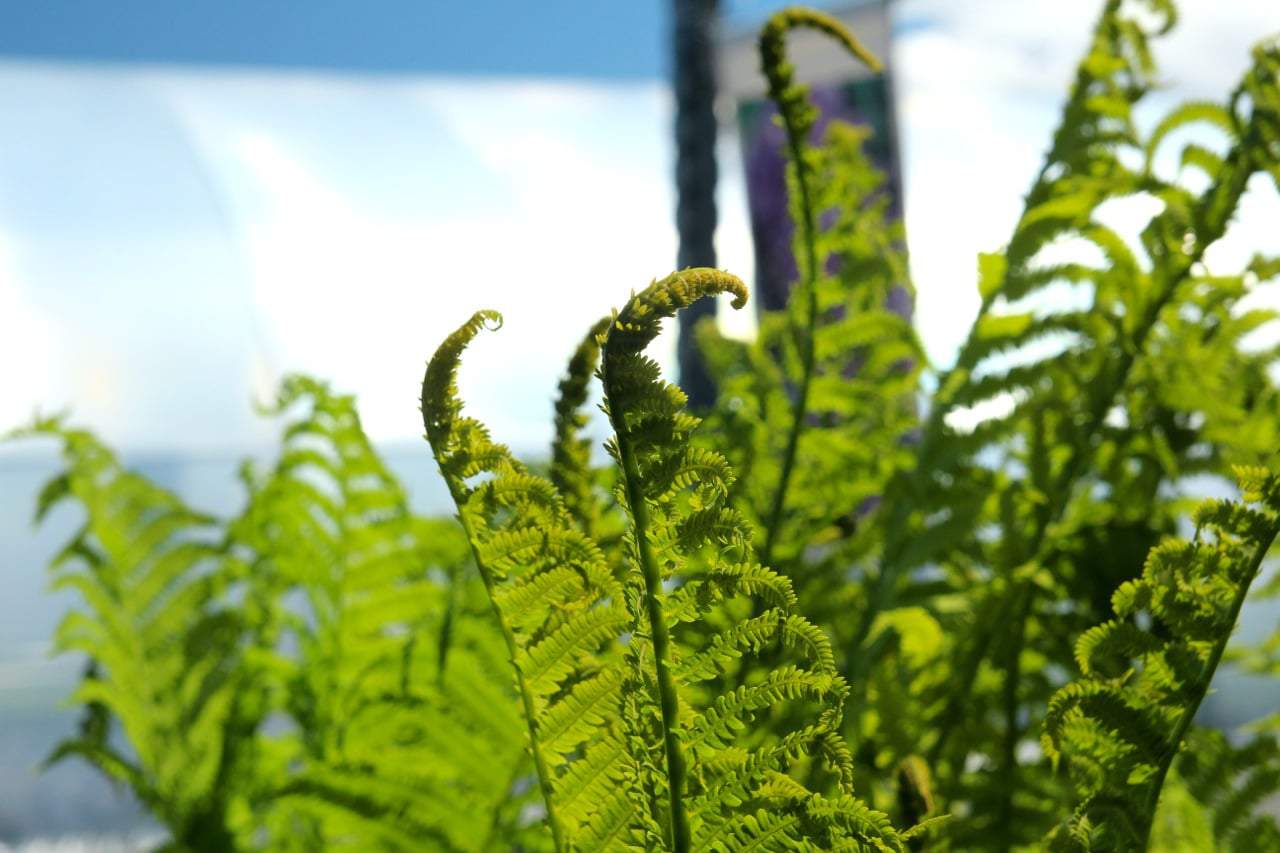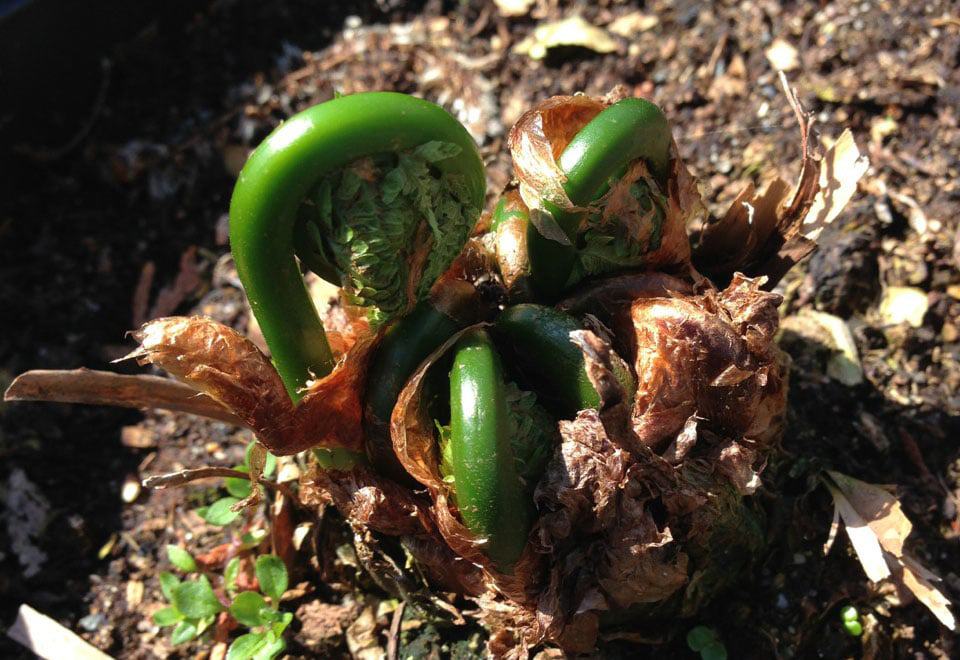
When I was a student at the former Nova Scotia Agricultural College, my major plant science project was titled, “Some Factors Affecting Rhizome Regeneration Rates in Matteuccia struthiopteris.” Translation: I was propagating ostrich ferns, the source of the delectable fiddlehead, using different types of soil and soilless media to generate new growth. Exciting stuff.
What was exciting, then as now, was going out to collect fiddleheads during the month of May. It’s a rite of spring in many parts of Atlantic Canada, and a cottage industry to boot. Ostrich ferns grow wild throughout the region and across North America, and spread by rhizomes to form colonies. You’ll find them growing in rich, moist soil, often alongside brooks and rivers, and in woodlands. Some say you can actually watch and hear a fiddlehead as it uncurls into a fern frond.
Here’s an important bit of botany: All fiddleheads are ferns, but not all ferns are fiddleheads. Confused? If you look at any sort of fern, whether it is a delicate maidenhair fern (Adiantum spp.) or a Japanese painted fern (Athyrium spp.), the new shoots start out tightly coiled — resembling the head of a violin, or fiddle, hence the common name. But many ferns are bitter tasting or even toxic, so you need to know what type you’re looking for.

Ostrich ferns grow from a crown, a black knobby structure that often sticks well up out of the ground, and many fronds can emerge from that one knob. The mature plant looks like a fountain of fronds, and is an elegant choice for a garden, especially if you have a moist, shady location and relatively cool growing conditions. If they grow in the wild near you, chances are with a little planning you can grow them in your yard, but probably only for ornamental purposes, as it takes quite a few plants to make a meal of fiddlehead greens.
The true fiddlehead also has a papery covering over the young growth, which you’ll want to wash off before eating. It’s important to wash fiddleheads very well before cooking and eating them, whether you’ve harvested them yourself or purchased them at a local market, because their tightly curled fronds can catch and hold soil and potentially harmful microflora and fauna. They aren’t tasty raw — they do have bitter compounds that disappear in the cooking process — but once cooked they can be used cold in salads and other dishes. If, of course, you can avoid eating them all in one meal!
Those of us who love fiddleheads have long known they are delicious and nutritious, but there is science to back this up. At the Atlantic Food and Horticulture Research Centre in Kentville, N.S., Dr. John DeLong has been researching fiddleheads for a number of years. In his analysis of the nutritional composition of ostrich ferns, he discovered that they contain significant amounts of omega-3 fatty acids, including one more commonly found in fish than in plants. Dr. DeLong (a distant relative) likens the nutritional value of fiddleheads to that of spinach, but with the added benefit of health-promoting compounds that could make them even more popular than ever.
Jodi DeLong
Jodi DeLong, of bloomingwriter.blogspot.ca, is the author of Plants for Atlantic Gardens. Jodi also writes about plants and gardens for Saltscapes magazine and The Chronicle Herald in Halifax.

Can’t wait for those Fiddleheads!!!! yum! yum!
Thanks for all yr.information.